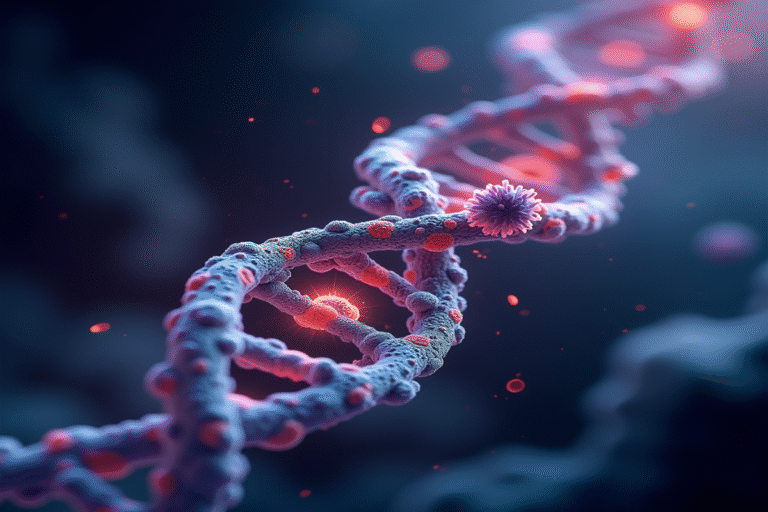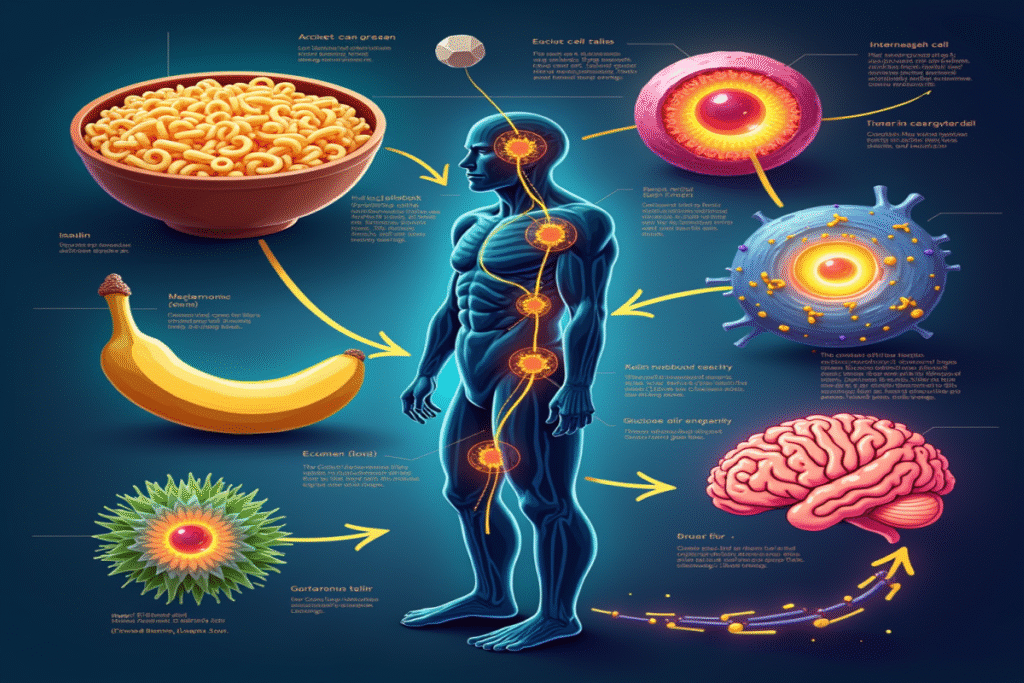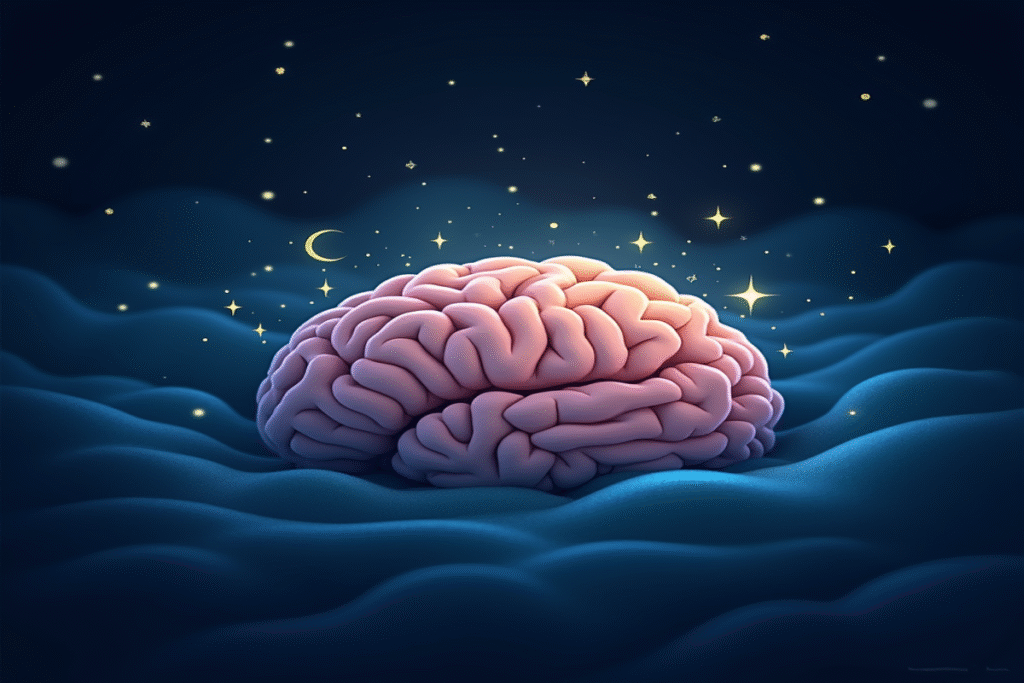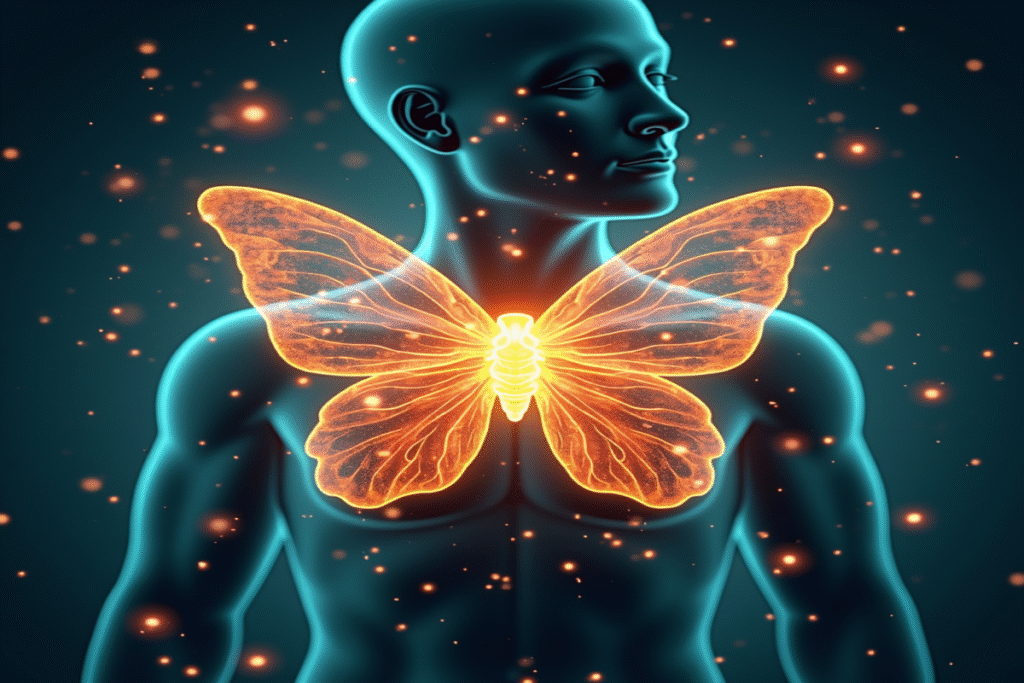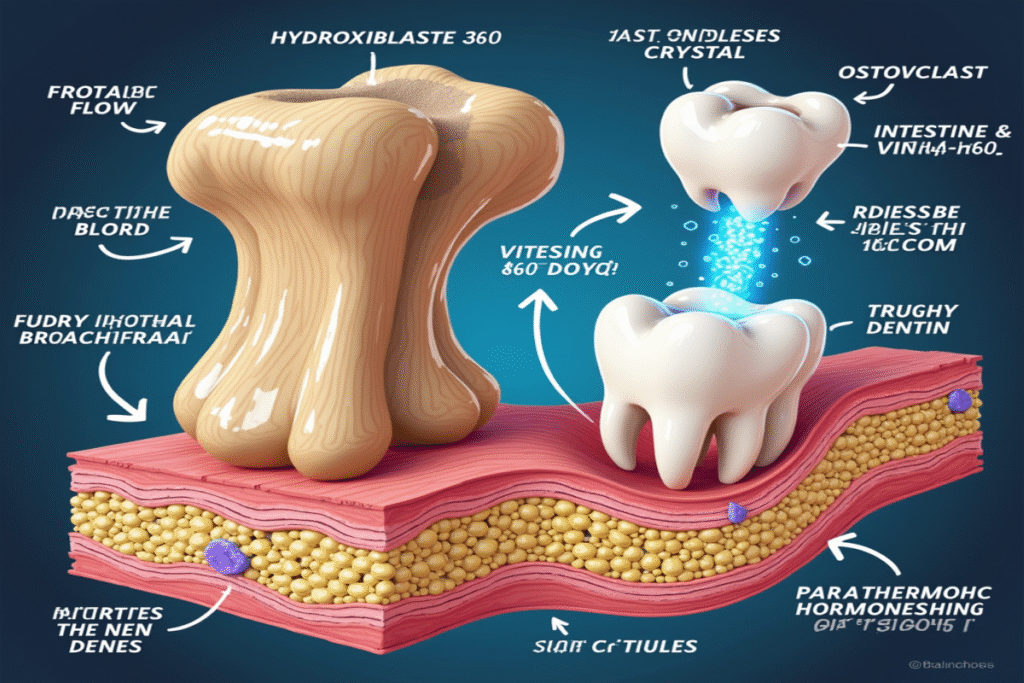Right now, inside your body, an invisible battle is raging. Your DNA—the precious genetic blueprint that makes you you—is under constant attack. In fact, each of your trillions of cells endures an astounding 10,000 to 100,000 DNA lesions every single day. That’s like having your entire instruction manual for life being torn, stained, and misprinted thousands of times daily.
Yet somehow, you continue to function. How? Your body has evolved an extraordinary, microscopic repair crew that works tirelessly to fix these errors before they can cause lasting harm.
The Invisible Threat: What Damages Your DNA?
Your DNA faces threats from both outside and inside your body:
- Ultraviolet radiation from sunlight creates abnormal bonds between DNA bases.
- Free radicals generated during normal metabolism oxidize DNA.
- X-rays and gamma rays can break the DNA backbone.
- Chemicals in cigarette smoke, pollution, and even some foods can attach to DNA.
- Replication errors occur when your cells divide—copying 6 billion DNA base pairs isn’t always perfect.
Your Molecular Repair Crew: The Heroes You Never Knew You Had
Most remarkable is that your body employs at least five major repair strategies, each specialized for different types of damage:
1. Base Excision Repair: The Precision Editors
When a single DNA base is damaged, often from oxidative stress, specialized enzymes called glycosylases patrol your DNA like editors. They recognize and remove the damaged base, creating a site that other enzymes then fill with the correct nucleotide. This happens approximately 10,000 times per cell per day—meaning your body performs this repair trillions of times daily.
2. Nucleotide Excision Repair: The Cut-and-Paste Team
This system handles bulkier DNA damage, such as that caused by UV radiation. When you get a sunburn, your skin cells’ DNA develops distortions called “thymine dimers.” The nucleotide excision repair team identifies these warped sections, cuts out a segment containing the damage (about 30 nucleotides long), and rebuilds the missing piece using the opposite DNA strand as a template. It’s like replacing an entire damaged word rather than just a letter.
3. Mismatch Repair: The Proofreaders
During DNA replication, sometimes the wrong base gets inserted. Special proteins scan newly synthesized DNA, looking for bumps where incorrect bases don’t properly pair with their partners. When found, they remove the error and replace it with the correct base. This reduces the error rate from one mistake per 10 million base pairs to one per billion—equivalent to making only one typo while typing out the entire contents of 1,000 novels.
4. Double-Strand Break Repair: The Emergency Response Team
Perhaps most impressive are repairs to double-strand breaks, where both strands of the DNA helix are severed. These breaks can lead to chromosomal rearrangements and cell death if not fixed. Your cells use two main strategies:
- Homologous recombination: Uses the intact sister chromosome as a template for accurate repair.
- Non-homologous end joining: Directly reconnects broken ends when no template is available.
Your cells can repair dozens of these potentially lethal breaks per day.
The Disease Connection: When Repairs Fail
The importance of these repair systems becomes clear when they malfunction:
People born with defects in nucleotide excision repair develop xeroderma pigmentosum, a condition in which UV exposure causes severe sunburns and a 10,000-fold increased risk of skin cancer. These individuals must avoid sunlight completely.
Mutations in BRCA1 and BRCA2 genes, crucial for double-strand break repair, significantly increase breast and ovarian cancer risk, demonstrating how one faulty repair system can dramatically affect health.
Scientists believe accumulated DNA damage contributes significantly to aging—our repair systems become less efficient over time, leading to cellular dysfunction.
An Ancient Defense: The Evolutionary Marvel
DNA repair isn’t a recent invention. These mechanisms have been conserved across billions of years of evolution, from bacteria to humans. In fact, the 2015 Nobel Prize in Chemistry was awarded to scientists who mapped these repair processes.
Some organisms have extraordinary repair capabilities that surpass ours. Tardigrades (water bears) can survive radiation doses 1,000 times what would be fatal to humans, thanks to a special protein that protects their DNA. Certain bacteria can reassemble their genomes even after they’ve been shattered by radiation.
Supporting Your DNA Guardians
While your repair systems work automatically, you can help them function optimally:
- Antioxidant-rich foods (colorful fruits and vegetables) help neutralize DNA-damaging free radicals.
- Adequate sleep gives your cells time to perform repairs.
- Sun protection reduces the burden on your nucleotide excision repair system.
- Avoiding smoking prevents exposure to thousands of DNA-damaging chemicals.
- Limiting alcohol reduces acetaldehyde exposure, which can crosslink DNA.
Certain nutrients are particularly important for DNA repair, including folate, zinc, magnesium, and vitamins B12, C, D, and E.
A Symphony of Protection
The most remarkable thing about your DNA repair systems is their coordination. These mechanisms don’t work in isolation—they communicate, cooperate, and compensate for each other, creating redundancy that keeps your genetic information safe.
In your lifetime, your body will experience approximately 10 quadrillion DNA damage events (that’s a 1 followed by 16 zeros). The fact that most of us don’t develop cancer or severe genetic diseases is a testament to the extraordinary effectiveness of these microscopic guardians.
The next time you step into the sunlight or breathe city air, remember the invisible molecular heroes working tirelessly within your cells, snipping, patching, and restoring your genetic blueprint—keeping you healthy through a lifetime of genetic challenges.
